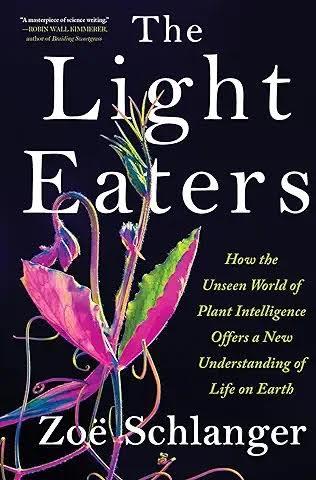
“Can plants really communicate?” It was April 6 and I, Nina Shoroplova, was leading a tree walk. The person asking me was one of the participants. He looked closely at me, a Vancouver Master Gardener, as I answered.
“Of course,” I said, suggesting he might enjoy reading UBC forestry professor Suzanne Simard’s book, Finding the Mother Tree: Discovering the Wisdom of the Forest. I explained how the roots of the trees we were walking near were communicating with the roots of the trees over there, along the filament threads (the hyphae) of mycorrhizal fungi (a mycorrhiza is a fungus that links plants, creating a path for communication between trees, shrubs, herbs, and more.)
“Hmm!” he responded, not quite convinced.
On April 27, I was leading another tree walk and doubt raised its head again.
“I’ve heard that plants can talk to each other. Do you believe that?”
“Well,” I said carefully, “by talk do you mean communicate?”
He did.
According to Merriam-Webster online, to communicate means “to transmit information, thought, or feeling so that it is satisfactorily received or understood.” Humans do this primarily through body language: facial expressions, vocal tone, gestures, stance, clothing. Words themselves count for less than 10% in our communications.
I said yes, plants can communicate.
This time, I offered the reason given for why forest bathing is so successful for those who walk in a forest to improve their health: the volatile organic compounds (VOCs) released by the trees provide all animals with good health in the form of lower blood pressure, relaxation, pain relief, antimicrobial cleansing (the destruction of pathogenic microorganisms), and more. The plants are releasing these compounds (terpene, for instance) as messages to each other and the animals around.
Another word for VOCs is aerosols, but it’s not so useful because, in addition to referring to the essential oil compounds emitted by trees, aerosols refers to harmful pollutants such as soot, dust, salt, smoke.
Why is it that I can accept that plants are able to communicate while other people cannot? Can you?
This April, I have been reading and am enraptured by Zoë Schlanger’s The Light Eaters: How the Unseen World of Plant Intelligence Offers a New Understanding of Life on Earth. Regularly writing about plants and politics during climate change, Schlanger is a staff writer for The Atlantic, Washington, DC’s profitable, almost-monthly magazine. Science is once more Schlanger’s topic in The Light Eaters, but it’s oh-so readable and the breadth of her coverage is extraordinary. Published by HarperCollins, its release date is May 6, 2024.
And now I know what is happening. We are in the middle of shifting from one paradigm to another. Apparently, we humans—both scientists and non-scientists—can only accept new information about something after we have made the existing paradigm wrong, redundant. “When an old paradigm falls away, in preference of a new one, everyone acts as though they’d known the new one was the truth all along,” says Schlanger (p. 221).
Schlanger says that Thomas Kuhn, American historian and philosopher of science, describes the bumpy progression of our knowledge of the world around us as “a series of abrupt paradigm shifts within specific fields” (p. 45).
If you are still trying to think about how a previous paradigm might have stuck for a while, remember that humans used to believe that the Earth was flat.
The paradigm that is currently falling away is that plants are unable to communicate, particularly with each other and with animals. Once this paradigm has fallen away, everyone will realize that flowering plants have survived on Earth for one hundred and thirty million years precisely because they have learned to communicate with each other, with both beneficial and harmful pollinators, and indeed with the entire ecosystem they are growing in. In fact, both plants and animals have a myriad of ways to communicate with each other, sometimes telling the truth and sometimes lying.
“Communication implies a recognition of self and what lies beyond it—the existence of other selves,” says Schlanger. “Communication is the forming of threads between individuals. It’s a way to make one life useful to other lives, to make oneself important to other selves. It turns individuals into a community” (p. 53).
Indigenous peoples call plants our older brothers, and refer to ourselves, we humans, as the little brothers, the babies, suggesting that our wisdom is the least. Plants are the earliest travellers, moving to every one of earth’s continents, by root and stem fragment; by seed spread on wind and water; by whole trees, shrubs, and plants travelling on peat islands across oceans; plant parts spread by birds; and on fallen logs floating across oceans.
The scientific discussion about the ability of plants to communicate is now safely underway.Science is observing plants more carefully, observing the many ways our photosynthesizing older brothers communicate with the world around them. “Plants will go on being plants, whatever we decide to think of them. But how we decide to think of them could change everything for us,” says Schlanger,(p. 51).
Book review by Nina Shoroplova, 🌱Vancouver Master Gardener